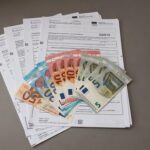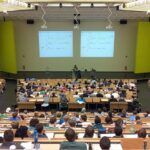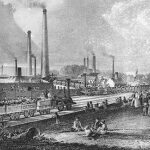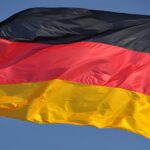 Most of the workforce is employed in the services sector. West Germany completed the transition from an industrial economy to one dominated by the services sector in the 1970s, and by the late 1980s this sector employed two-thirds of the workforce. In contrast, when the Berlin Wall fell, East Germany still had not made this transition. Because more of the workforce was engaged in industry and agriculture than in the services sector, its socioeconomic structure resembled that of West Germany in 1965.
Most of the workforce is employed in the services sector. West Germany completed the transition from an industrial economy to one dominated by the services sector in the 1970s, and by the late 1980s this sector employed two-thirds of the workforce. In contrast, when the Berlin Wall fell, East Germany still had not made this transition. Because more of the workforce was engaged in industry and agriculture than in the services sector, its socioeconomic structure resembled that of West Germany in 1965.
Rainer Geissler, a German sociologist, has examined his country’s social structure in light of the economic changes that have taken place in the postwar era. Because of the growth of the services sector and the doubling of state employees since 1950, he has discarded earlier divisions of German society into an elite class, middle class, and worker class, with a small services class consisting of employees of all levels. He has replaced this division with a more nuanced model that better reflects these postwar changes. As the economy of the new Länder is incorporated into the western economy, its much simpler social structure (elite, self-employed, salaried employees, and workers) will come to resemble that of the old Länder.
According to Geissler, at the end of the 1980s West Germany’s largest group (28 percent of the population) was an educated salaried middle class, employed either in the services sector or in the manufacturing sector as educated, white-collar employees. Some members of this group earned very high salaries; others earned skilled blue-collar wages. This professional class has expanded at the expense of the old middle class, which amounted to only 7 percent of the population at the end of the 1980s. A less educated segment of the services sector, or white-collar employee sector, amounted to 9 percent of the population. Geissler divided the working class into three groups: an elite of the best-trained and best-paid workers (12 percent); skilled workers (18 percent), about 5 percent of whom are foreigners; and unskilled workers (15 percent), about 25 percent of whom are foreigners. A portion of this last group live below the poverty line. Farmers and their families make up 6 percent of the population. At the top of his model of the social structure, Geissler posits an elite of less than 1 percent.
Related articles:
German Society: Traditions, Modernity, and Cultural Identity
Germany’s Best-Kept Secret: The Culture and Traditions of the Sorbs
German Society
German Population
Marriage and Family in Germany
Population Distribution and Urbanization in Germany
Healthcare in Germany







